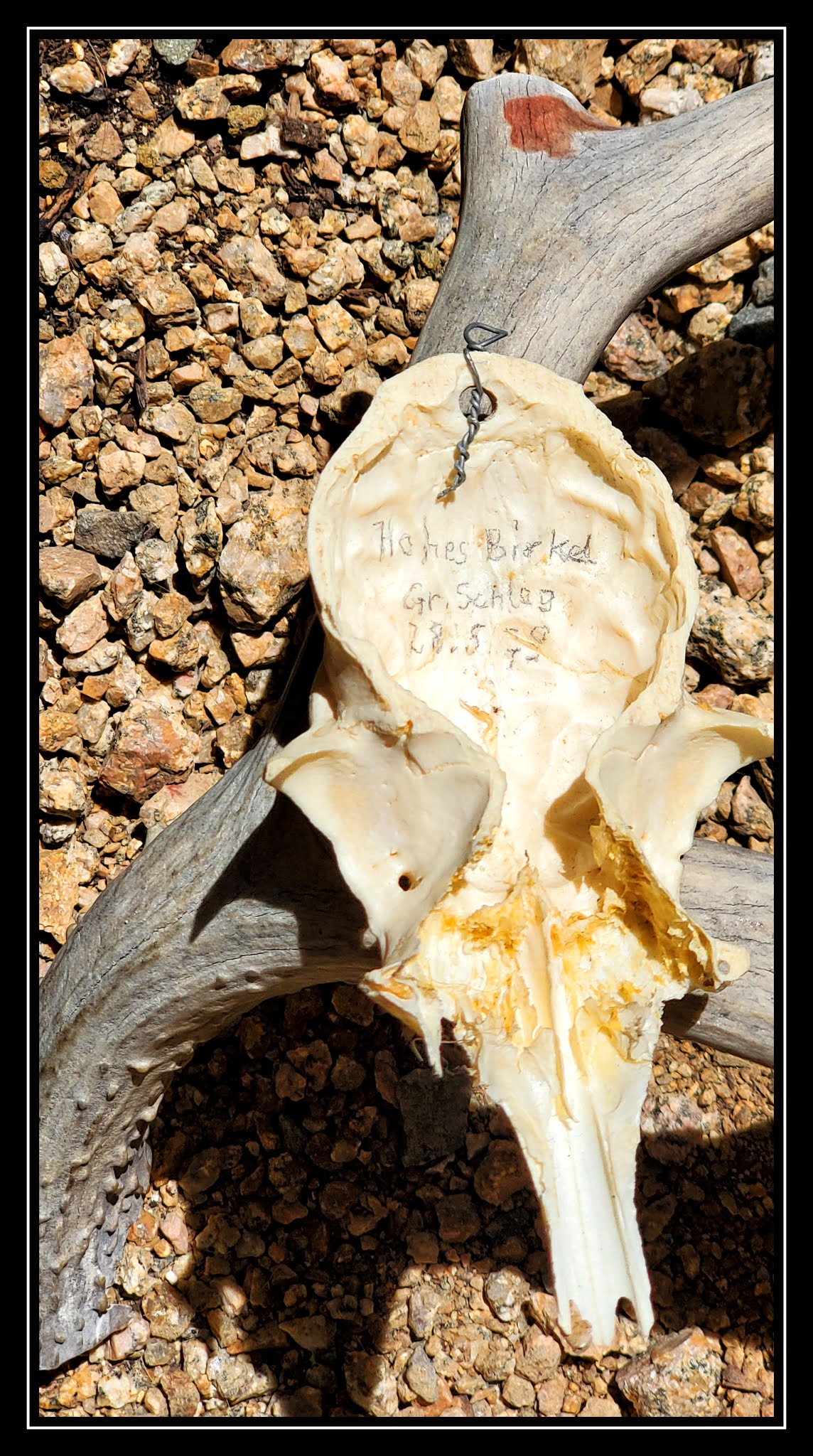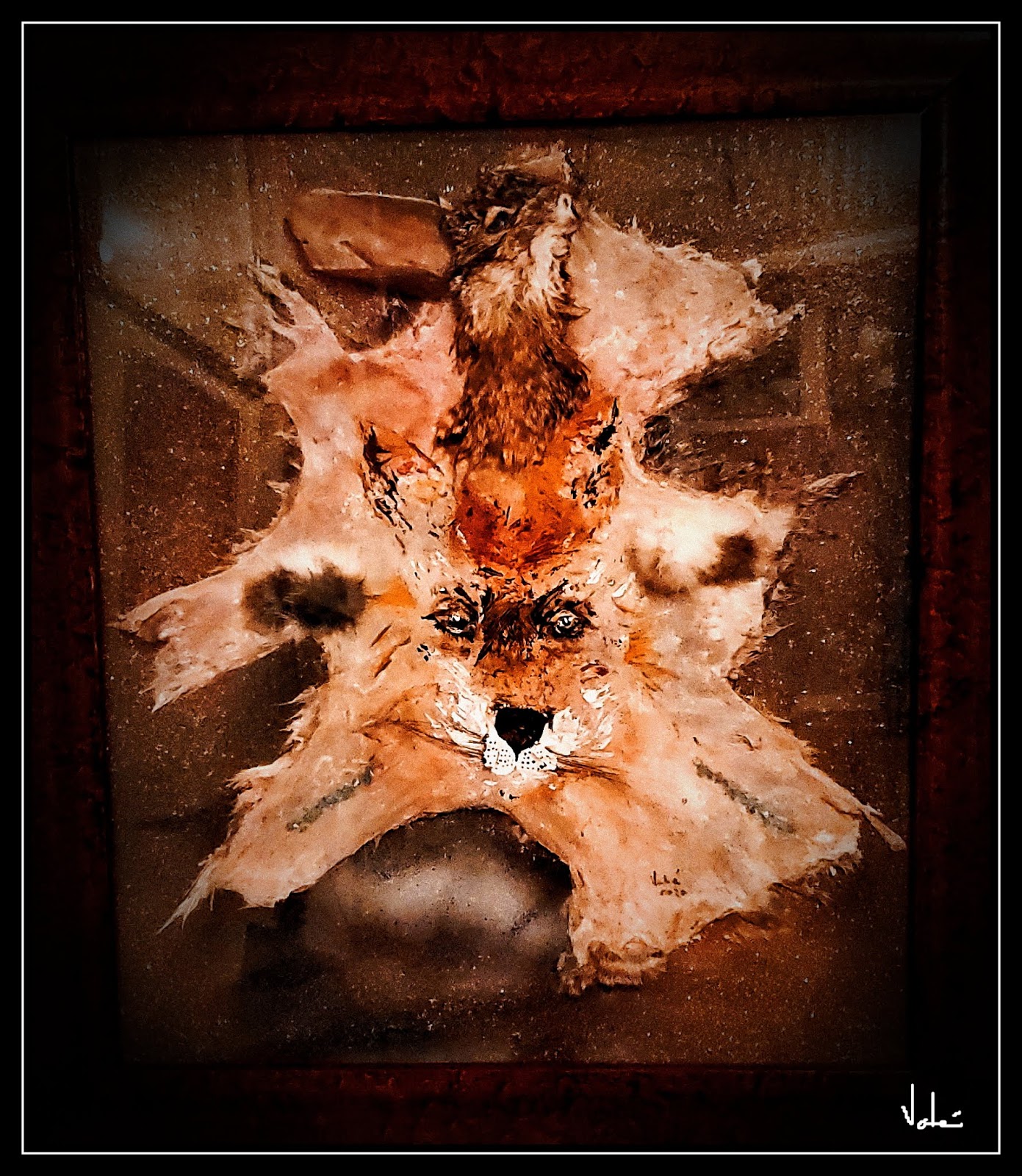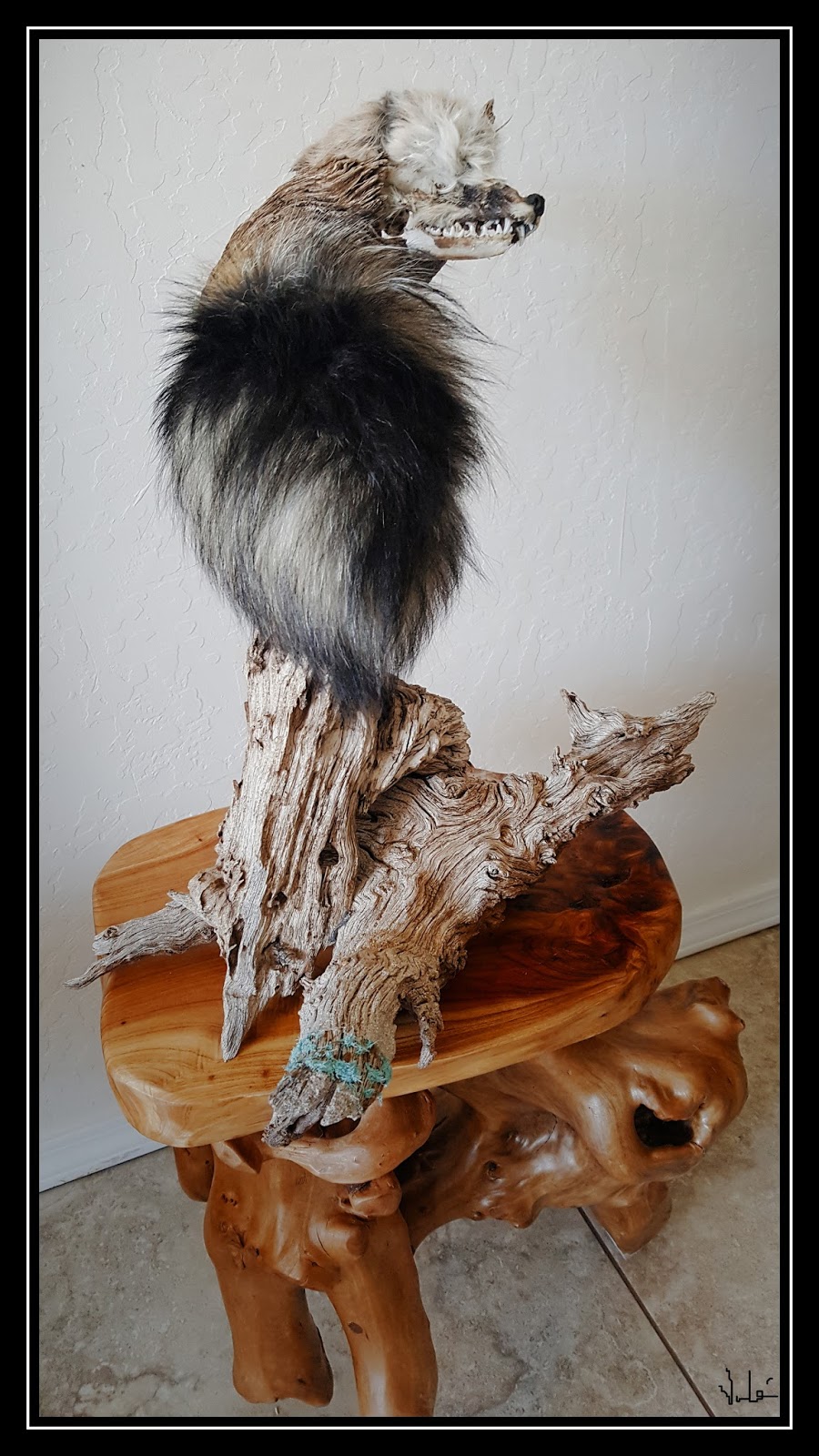The Metamorphosis of Roe Deer Antlers from Rheinland, Germany
Two years ago I came across an old box in an antique
store that said “old bones”. Of course that piqued my interest to check the
content.
There were small deer antlers and skulls, and I
immediately recognized the European Roe buck antlers. The owner of the store
told me the box has been there forever and if I wanted it I could have it for a
small price.
Which I did.
Back home I found two tags that clearly stated that
these were harvested in Rheinland, and area along the Middle Rhine River bordering
Germany, France, Belgium and the Netherlands. What were most interesting were
the dates on these tags – 1956 and 1979!
Here is one of the tags and the antlers. Sixty five
years later the bones were petrified and lost any luster, but I decided to restore
and use them for various art works.
Here is one restored specimen. The Roe Deer, or
roebuck, are not found in the US so not only they are rare to come across but
given their age, have some historical value.
… So, I use one antler as the stem for a mountain
man pipe as my first experiment (https://vaheark.blogspot.com/2021/03/a-pipe-made-of-deer-antler-what-every.html).
I received comments from Germany and Belgium asking about the antlers’ origin.
Therefore, decided to make another pipe using the second antler on that same skull
and provide a background about their origin.
Here is the skull after I cut the second antler.
Inside there is a pencil written name and a date. Hmm, maybe someone who reads
this page knows about that man since the date says 1979.
The first step was to cut the crown up 3 inches
where the pearling ended. The pedicle was prominent and I decided to carve it
out to cover the base of the bowl I was going to make out of the 3 inch cut.
The coronet, or crown, had a lot of texture so it would be the top of the bowl.
The plan was simple – the White Tail’s antler would
give me the bowl and the mouthpiece, while the Roe Deer antler would constitute
the stem.
Easy to say! The handheld tool I have struggled in
cutting and drilling for long while. Eventually I was able to get the three parts
ready. I was not sure about the best fit of the mouthpiece so I cut two of the
white tail antler tips to experiment with.
Next was the process of restoring colour and luster.
I do not use artificial colouring. My favorite is to rub the antlers with
boiled coffee grounds and then to let them sit in the solution overnight. The
abrasiveness of the grounds allows the tannins to seep in and for the oils in
the coffee to restore a certain shine.
And the final product looks like this:
May 5, 2021
© Vahé A. Kazandjian, 2021










Comments
Post a Comment